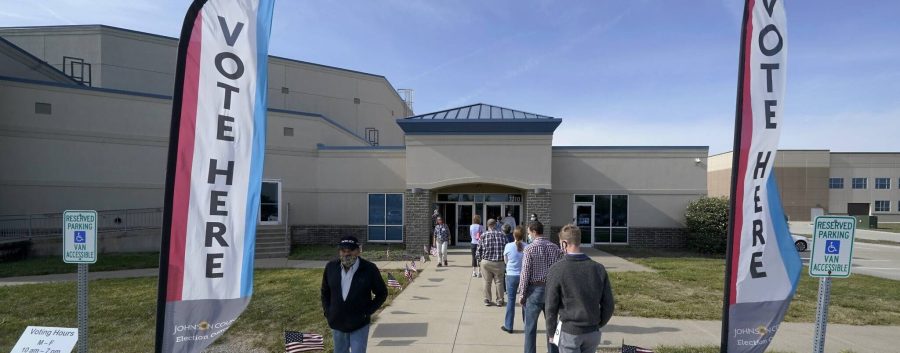Slider photo taken from Wikipedia.
In 1787, amid the contention between Federalists and Anti-Federalists, James Madison wrote Federalist 10, a paper that warned about the disease of factions and he claimed that a representative democracy was the cure. In Federalist 51, Madison articulated that “ambition must counteract ambition.” The existence of parties is necessary to ensure that one faction does not attain too much power, doing as it wants with no checks and balances. While Madison’s reasoning was sound, and his purpose was to provide a competent government for the American people, today’s political climate shows that when ambitions become too high, nothing can be accomplished at all.
Today, incredibly important issues such as climate change, abortion, gun control, capital punishment, immigration reform, conflict in the Middle East, minority rights, and the student loan debt crises are not being put into the spotlight to make change– they are instead being used as props. Politicians bring them up to wave around and yell about to make themselves look better and to make the other party look worse.

Lora McDonald, the Executive Director at More Squared commented on this phenomenon in regards to both state and national government saying, “There’s a strong political stronghold of one party right now, the Republicans, in both states [Kansas and Missouri], as well as in the United States Congress. It’s really problematic that people cannot cross the aisle to build consensus and get things done.”
To provide an example of this, just a few decades ago, abortion was an issue less decided by the party you belonged to, but by personal discretion. In the 1970s, Democrats voted against abortion at the same rate as Republicans. Yet today, any Democrat who calls themselves “pro-life” would be disavowed from their party, and vice versa for Republicans.
Despite the fact that 1.16 percent of women have abortions in America, the coverage that abortion receives in the news is astronomical. Just in January alone, Fox News’ Website posted 38 articles about abortion, and CNN’s Website posted 42 articles concerning abortion, giving growing attention to an issue that a large majority of Americans will never experience.
So, why has this issue become so polarizing? It has to do with how our parties get votes. In his 1972 presidential campaign, Richard Nixon began taking an anti-abortion stance for the purpose of gaining Catholic and socially conservative voters. The election was won with a majority of Catholic votes, and Republicans then decided to take up the issue as a form of bringing even more socially conservative voters to the party.
By 1980, Ronald Reagan’s appointment of anti-abortion judges saw a slight but significant shift in Democrats supporting abortion over Republicans. The Republican party began styling itself the party of “family-values” and anti-abortion, and the Democrat Party became the party of “Reproductive Justice.” Both parties saw that when supporters are split into voting blocs rather than individual voters, it’s much easier to gain support. Republicans emerged as the party for pro-life Christians, so they targetted them with advertisements at their church and gerrymandered their houses in or out of districts to influence elections.
More and more, politicians only need to do or say the absolute minimum to convince their voter base that they really believe in the things their party represents. If there ever comes a time when a politician comes along and actually cares about the things they advocate for, the possibility of working with politicians of the opposing party would be an uphill battle.

The existence of more voting blocs means that the vast majority of politicians have been able to run for office on the platform of their party and get elected regardless of their beliefs or actions in office. For example, well over half of Hispanic Americans disapprove of President Obama’s handling of deportations in 2011, but 71 percent of the Latinx community still chose to vote for him in 2012 (a 4-point increase from 2008). Unfortunately, many Americans have been tricked into voting against their own interests.
As a minor who is currently unable to vote, the future for our political climate seems bleak. I have no confidence at all that real change can be made for the issues I care about. This seemingly irremediable situation is due to the fact that politicians, on both sides, are too busy clawing at each other’s throats to get anything done.
As a member of this democracy being represented by these people, I am left feeling like the issues I care about don’t matter. That they, as well as myself and other voters or future-voters, are just pawns being used to ensure an incumbent advantage.
An analogy often used to explain Madison’s Federalist 10 is the Crab Bucket Theory. This idea states that one crab in a bucket by itself will have no problem getting out. Crabs stuck in a bucket with several other crabs however, will never be able to escape. This analogy implies that with many representatives keeping their peers in check, no faction, party, or representative can become tyrannical. Today however, all it accomplishes is making Congress look like crabs stepping on top of each other trying to get to the top. It is my hope that the upcoming 2020 election will restore some kind of productivity to the American government. But honestly, as this election keeps playing out, and as the drama in Washington continues, my hopes are not too high.
_____________________________________________________________________________
*The views and opinions expressed in this article are those of the authors and do not necessarily reflect the position of HBHA’s student publication. The editorial student staff of the “Rampagewired” places the highest value on student-run journalism and responsible, free expression.*
















































































